CRFR
CRFR (Corticotropin-releasing Factor Receptor), also known as corticotropin-releasing hormone receptor (CRHR), belongs to the G protein-coupled receptor family. There are 3 types of this recetpor, CRF1, CRF2 and CRF3 receptor. CRF1 receptor (CRF1 or CRF1α) is functionally coupled to adenylate cyclase and it belongs to the secretin-like, family B of GPCRs. CRF1 receptor has several splice variants (CRF1c-CRF1m) including CRF1β. CRF2 receptor is a 411-amino acid protein with approximately 70% identity to the known CRF1 and it is functionally coupled to adenylate cyclase. The CRF2 receptor has been shown to be expressed as three functional splice variants, the CRF2α (411-413 amino acids), the CRF2β (431-438 amino acids) and the CRF2γ (397 amino acids). CRF3 receptor is a 428-amino acid protein, which binds CRF with a 5-fold higher affinity than URO and SVG and is expressed in the pituitary gland, urophysis, and brain.
CRFR subserves central functions related to stress physiology, and also exerts peripheral actions relevant to cardiovascular, muscular, gastrointestinal, pancreatic, inflammatory, and neoplastic diseases.
Targets for CRFR
Products for CRFR
- Cat.No. Nombre del producto Información
-
GC66088
α-Helical CRF(9-41) TFA
α-Helicoidal CRF(9-41) TFA es un antagonista competitivo del receptor CRF2 con KB de ~100 nM. α-Helicoidal CRF(9-41) TFA también es un agonista parcial del receptor CRF1 con un EC50 de 140 nM.
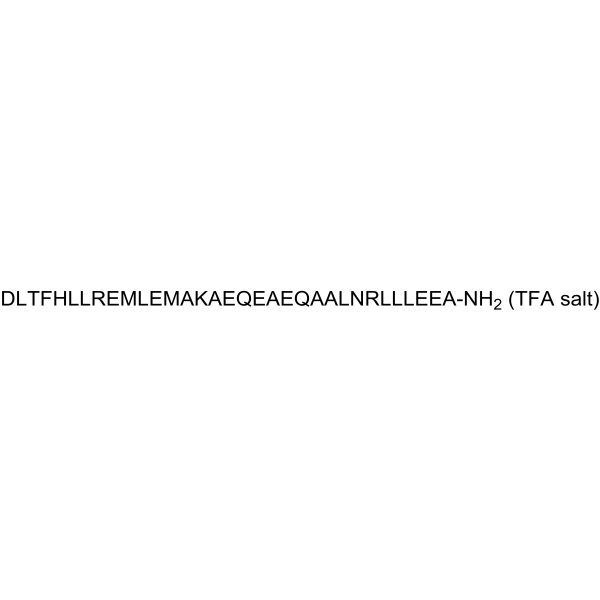
-
GC70559
Antalarmin
Antalarmin es un antagonista selectivo del receptor del factor liberador de corticotropina no peptídico 1 (CRHR1) con un Ki de 2,7 nM.

-
GC38886
Antisauvagine-30 TFA
aSvg-30 TFA
Antisauvagine-30 TFA (aSvg-30 TFA) es un antagonista peptÍdico del receptor CRF2 potente, altamente selectivo y competitivo.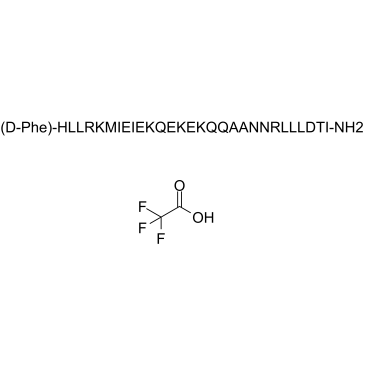
-
GC50455
Cortagine
Cortagine es un agonista especÍfico del subtipo 1 del receptor del factor liberador de corticotropina (CRF1) con una IC50 de 2,6 nM para rCRF1.

-
GC60724
Corticotropin-releasing factor (human) (acetate)
Human CRF acetate; Human corticotropin-releasing factor acetate
El acetato humano del factor liberador de corticotropina (acetato de CRF humano) estimula la sÍntesis y secreciÓn de adrenocorticotropina en la hipÓfisis anterior.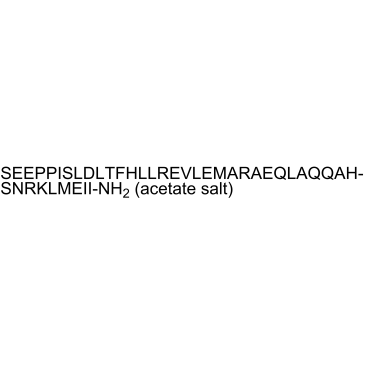
-
GC31043
CP 316311
CP 316311 es un potente y selectivo antagonista del receptor CRF1 con un valor IC50 de 6,8 nM.
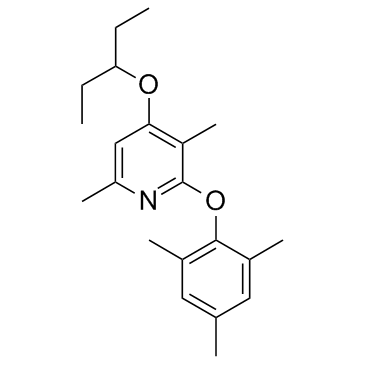
-
GC30863
CP 376395 (CP-316311)
CP 316,311
CP 376395 (CP-316311) es un potente y selectivo antagonista del receptor del factor 1 liberador de corticotropina (CRF1).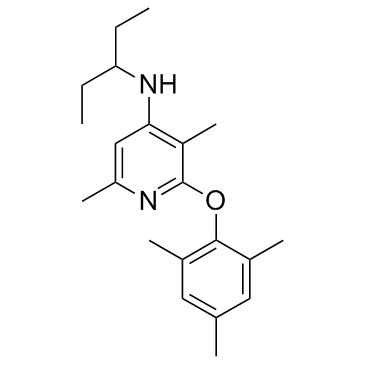
-
GC35748
CRF, bovine
CRF, bovino es un potente agonista del receptor CRF, y desplaza [125I-Tyr]CRF ovino con una Ki de 3,52 nM.
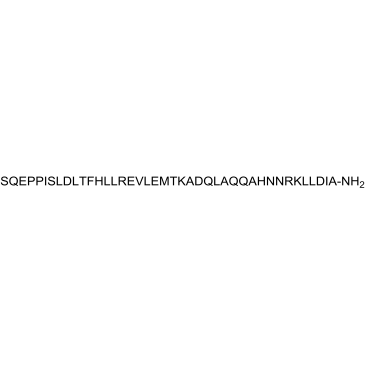
-
GC34542
CRF, bovine TFA
Corticotropin Releasing Factor bovine TFA
CRF, bovino (TFA) es un potente agonista del receptor de CRF y desplaza [125I-Tyr]CRF ovino con una Ki de 3,52 nM.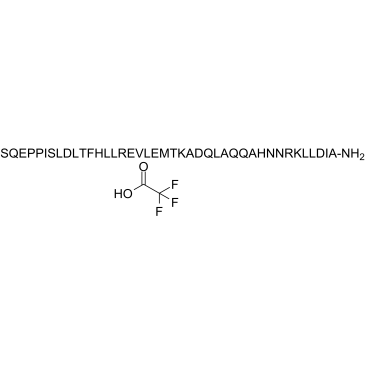
-
GC31166
Emicerfont (GW876008)
GW876008
Emicerfont (GW876008) es un antagonista del receptor del factor liberador de corticotropina tipo 1 (CRF1) con una IC50 de 66 nM.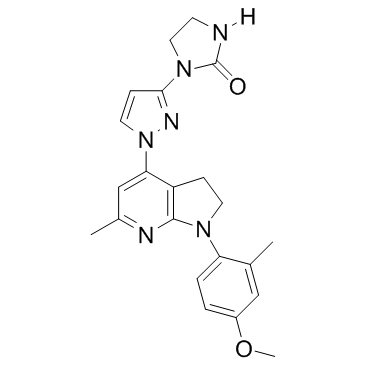
-
GC36787
NVS-CRF38
NVS-CRF38 es un nuevo antagonista del receptor 1 del factor liberador de corticotropina (CRF1) con baja solubilidad en agua.
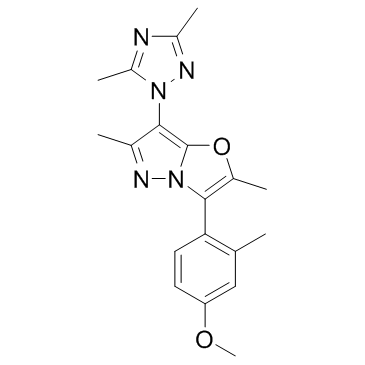
-
GC33712
Pexacerfont (BMS-562086)
BMS 562086, DPC-A69448
Pexacerfont (BMS-562086) es un antagonista selectivo del receptor del factor liberador de corticotropina (CRF1) con IC50 de 6,1± 0,6 nM para el receptor CRF1 humano.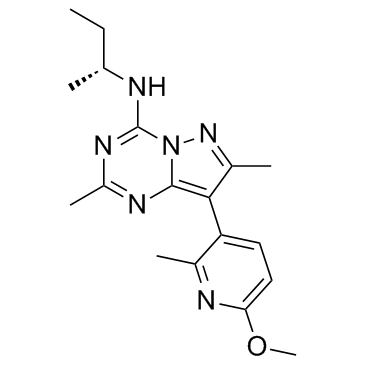
-
GC30792
R121919 (NBI30775)
R121919 (NBI30775) (NBI30775) es un potente antagonista del receptor CRF1 de molécula pequeÑa con una Ki de 2 a 5 nM para el receptor CRF1 y una actividad mÁs de 1000 veces mÁs débil en el receptor CRF2, la proteÍna de uniÓn a CRF u otros 70 tipos de receptores .
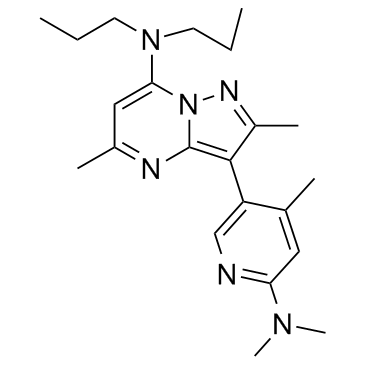
-
GC72120
Stressin I TFA
Stressin I (Cyclo(31-34)[DPhe12,Nle21,38,Glu31,Lys34]Ac-hCRF(4-41)) TFA is a potent CRF1 receptor selective agonist, Ki is 1.7 nM.

-
GC65893
Tildacerfont
Tildacerfont es un antagonista del receptor del factor liberador de corticotropina tipo 1 (CRF1) potente y activo por vÍa oral. Tildacerfont reduce eficazmente la hormona adrenocorticotrÓpica (ACTH) y los niveles de andrÓgenos suprarrenales. Tildacerfont tiene un perfil de seguridad favorable. Tildacerfont se puede utilizar para investigar la hiperplasia suprarrenal congénita.
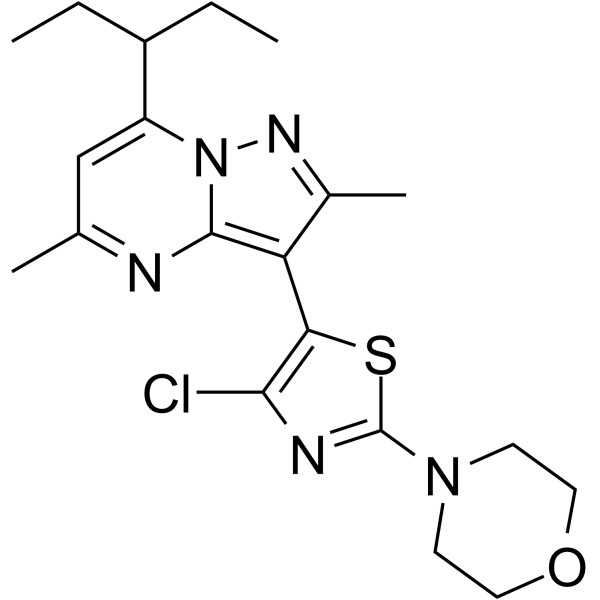
-
GC17432
Urocortin (human)
La urocortina (humana), un neuropéptido de 40 aa, actúa como un agonista selectivo del receptor CRF2 endógeno, con Kis de 0,4, 0,3 y 0,5 nM para hCRF1, rCRF2α y mCRF2β, respectivamente.

-
GC12802
Urocortin (rat)
Urocortin (Rattus norvegicus); Rat urocortin;
La urocortina (rata) (Urocortina (Rattus norvegicus)) es un neuropéptido y un potente agonista endógeno de CRFR con Kis de 13 nM, 1,5 nM y 0,97 nM para CRF1 humano, CRF2α de rata y CRF2β de ratón, respectivamente.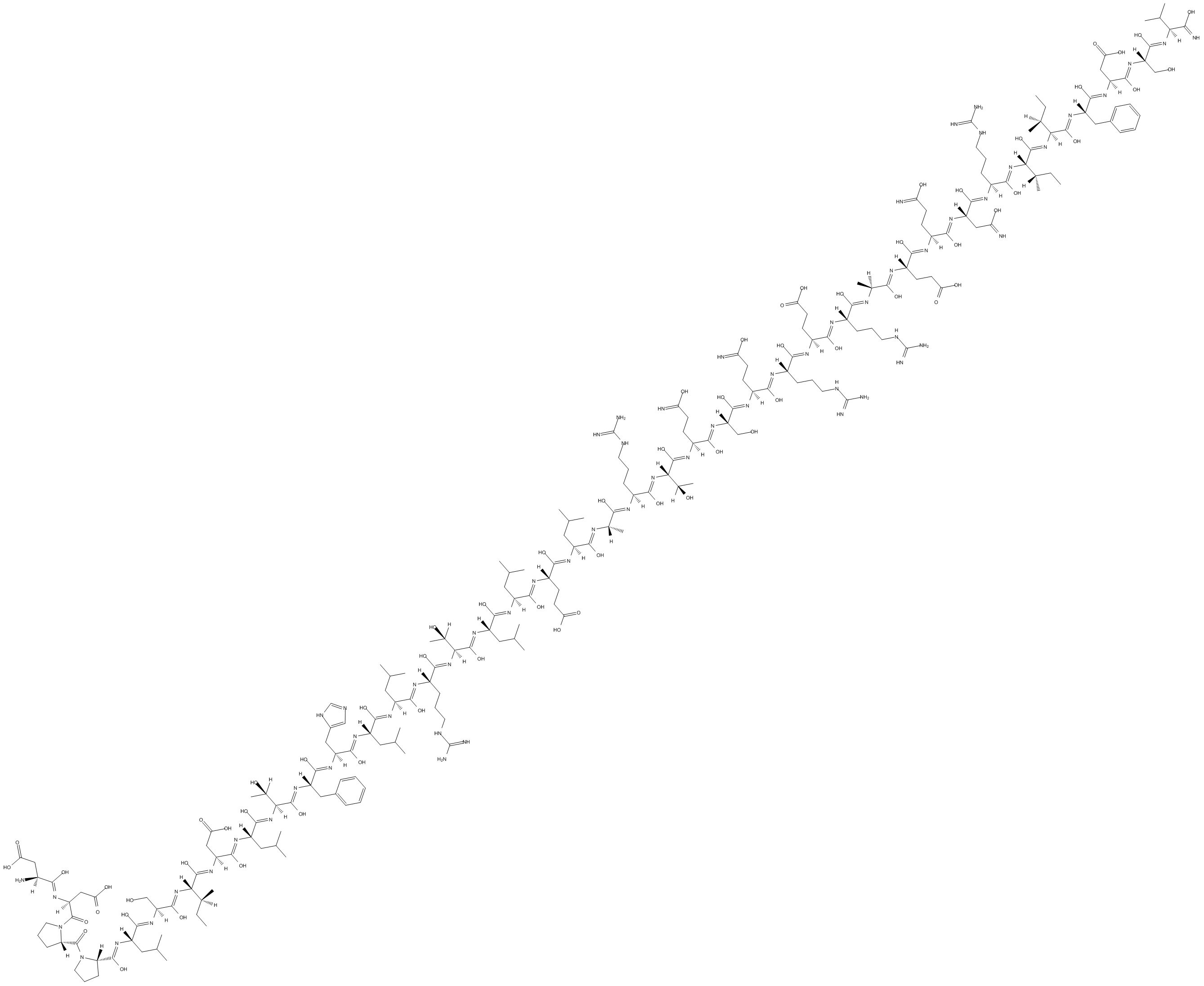
-
GC37868
Urocortin II, human
La urocortina II (humana) es un agonista peptÍdico endÓgeno selectivo del receptor del factor liberador de corticotropina tipo 2 (CRF2).
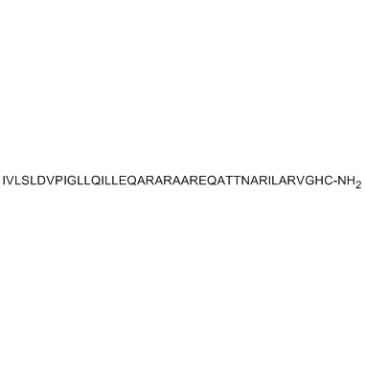
-
GC37869
Urocortin III, mouse
La urocortina III de ratÓn es un péptido relacionado con el factor liberador de corticotropina (CRF).
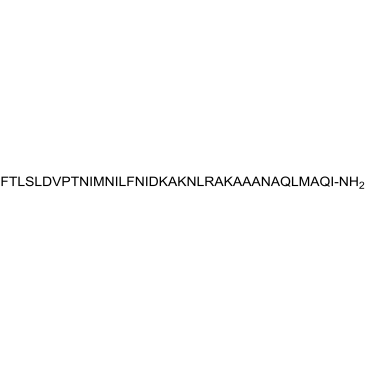
-
GC37870
Urocortin III, mouse (TFA)
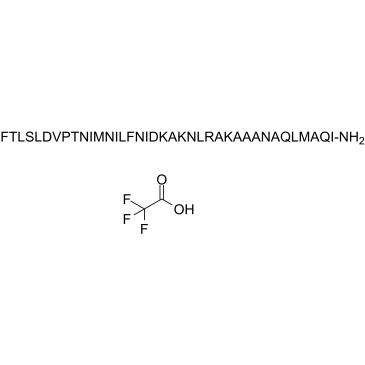
-
GC32590
Urotensin I (Catostomus urotensin I)
La urotensina I (Catostomus urotensina I) (Catostomus urotensina I), un neuropéptido similar a CRF, actÚa como un agonista del receptor de CRF con pEC50 de 11,46, 9,36 y 9,85 para CRF1 humano, CRF2 humano y CRF2α de rata; receptores en células CHO y Kis de 0,4, 1,8 y 5,7 nM para hCRF1, rCRF2α y mCRF2β receptores, respectivamente.
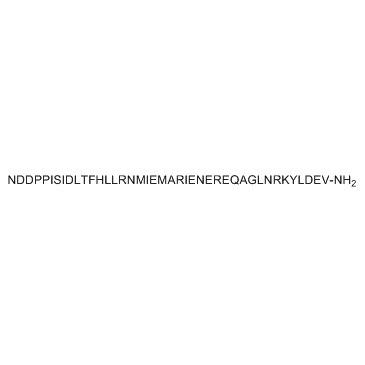
-
GC61583
Urotensin I TFA
Catostomus urotensin I TFA
Urotensina I (Catostomus urotensina I) TFA, un neuropéptido similar a CRF, actÚa como un agonista del receptor CRF con pEC50s de 11,46, 9,36 y 9,85 para los receptores CRF1 humano, CRF2 humano y CRF2α de rata en células CHO, y Kis de 0,4, 1,8 , y 5,7 nM para los receptores hCRF1, rCRF2α y mCRF2β, respectivamente.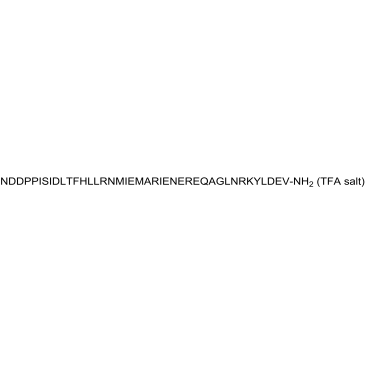
-
GC19374
Verucerfont
Verucerfont es un antagonista del receptor 1 del factor liberador de corticotropina (CRF1) con IC50 de ~6.1, >1000 y >1000nM para CRF1, CRF2 y CRF-BP, respectivamente.

-
GC72200
[DPro5] Corticotropin Releasing Factor, human, rat TFA
[DPro5] Corticotropin Releasing Factor, human, rat TFA is a selective corticotropin releasing factor/hormone R2 (CRH-R2)agonist.
![[DPro5] Corticotropin Releasing Factor, human, rat TFA Chemical Structure [DPro5] Corticotropin Releasing Factor, human, rat TFA Chemical Structure](/media/struct/GC7/GC72200.png)
-
GC72174
α-Helical Corticotropin Releasing Factor (9-41)
α-Helical Corticotropin Releasing Factor (9-41) is a corticotropin releasing factor (CRF) antagonist.



